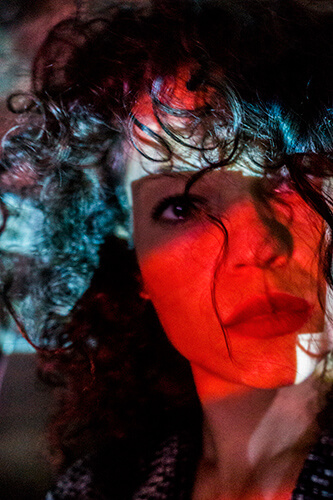Jelena Janković is fine art photographer from Belgrade, specialized in dance and theater photography.
Actively engaged in the documentary, freelance fashion, conceptual and experimental photography.
Recipient of significant awards for her photography, such as Grand Prix Balkan Photo Awards 2016, 2017 Sony
World Photography Awards, Siena International Photo Awards 2017, First Prize of 2017 Andrei Stenin International Press Photo Contest, FIAP plate of Sterijino Pozorje for Theatre Photography... She has exhibited at twenty groups and seven solo exhibitions and has been credited for photography in over 40 theater productions.
Her photographs have been published: Rolling Stone (DE), Professional Photographer(USA), ELLE (SRB) Digital SLR Photographer magazine (UK), fotoMAGAZINE (DE), LensCulture, Lürzer's Archive, GEO (DE, ESP), National Geographic (SPA)...
She is a member of The Association of Fine Arts Artist and Designers of Serbia.
Statement
Photography helped me to express myself, through it I study about myself and and about people around me.
I create in several fields:
Documentary photography is my reflection on the world around me; i use it to educate about the truths that exist.
Dance and theatre photography is about expressing my inner emotion; the power and fragility of dance is
affecting my most profound and intimate feelings.
Fashion is the platform for staging my theatre play; it is the blend of knowledge, imagination, and precision.
Conceptual and Experimental photography. photography is the space without borders; it liberates my vision beyond known conventions.
The project Bird talks about me.
I am 32 years old and recently I have been diagnosed with dyslexia. Because of the very poor school system,
uneducated teachers that were not able to distinguish dyslexia and me not being able to discover it in time, I have
been living my whole life in fear and hiding. Unaware of the problem that I’m living with, frustrated with my inability to work and study normally, I developed various methods with whom I managed to avoid reading in front of my friends and professors. I didn’t knew how to explain that the letters are shaking in front of my eyes while I was reading and that I unconsciously twisted the letters and words that I was writing. I was feeling like a bird
locked in a cage. The only safe place that I felt was my art creation; creative expression was my escape. I visited zoological gardens in Belgrade and Amsterdam and photographed locked birds in cages that were representing me and all the others that were living in a similar fear. Afterwards I would draw across the photos combining different techniques like painting and collage, so I can show to the world all the freedoms that exist
from the inside. This project was developed as a wish, so people can discuss openly about dyslexia, all the problems that this disease carries, and so we can set ourselves free and stop the process of hiding because of the fear of judgements.
The second project is The chosen ones
Inspired by visual effects, I watched a bunch of people that reminded me of the great army. In these glorious visual moments, the lights chose some of them randomly, but some of them chose themselves by taking selfies. Selfie culture started to determine our existence; everybody needs to know where we are or are we doing something. Social media has a huge impact on our views about current issues. Social media has become one of the largest epidemics that affect the social relationship between people. While
we are waiting for the approval of others, we miss the opportunity to enjoy the mysterious world around us.
